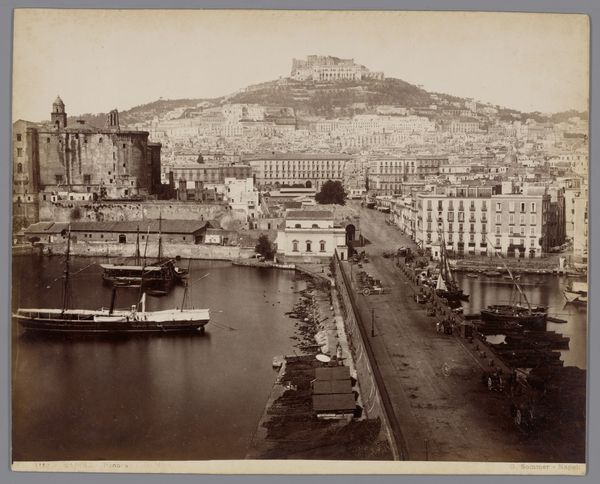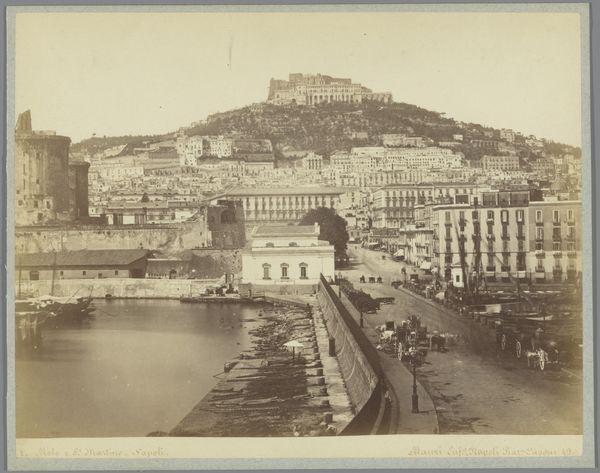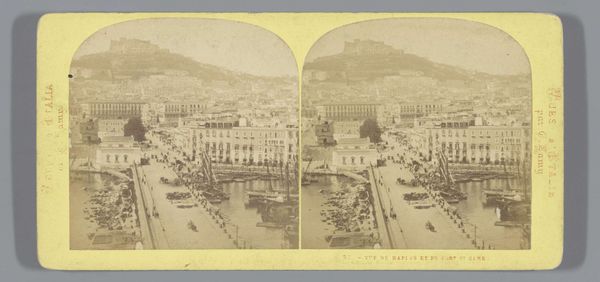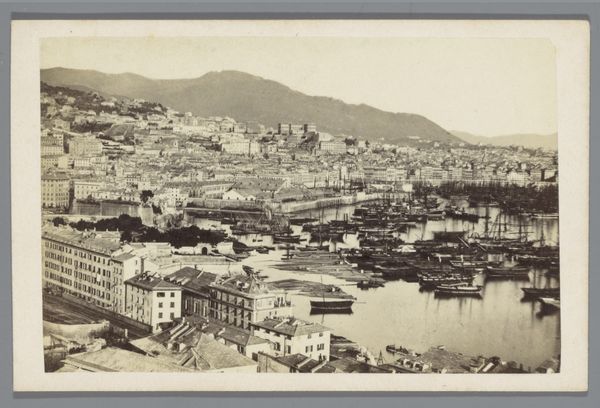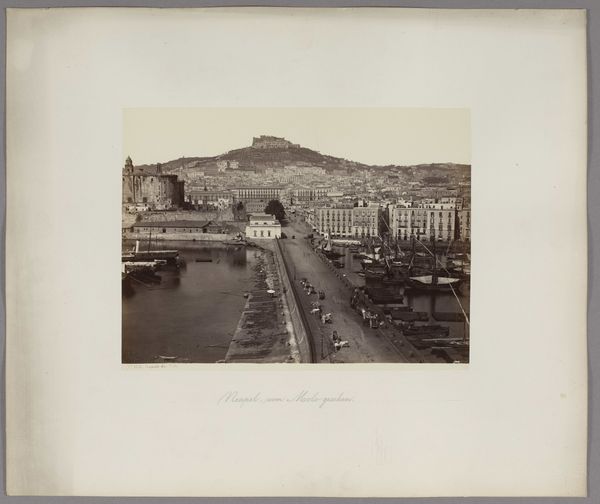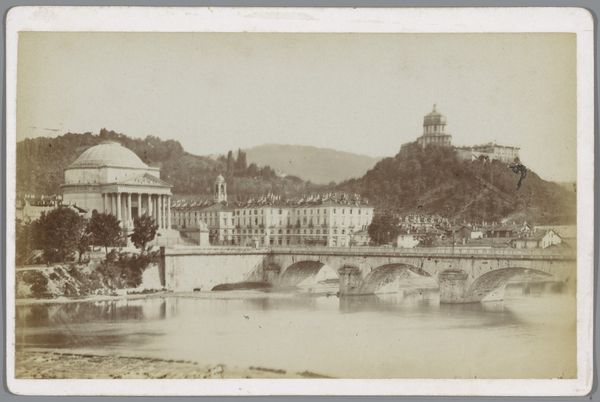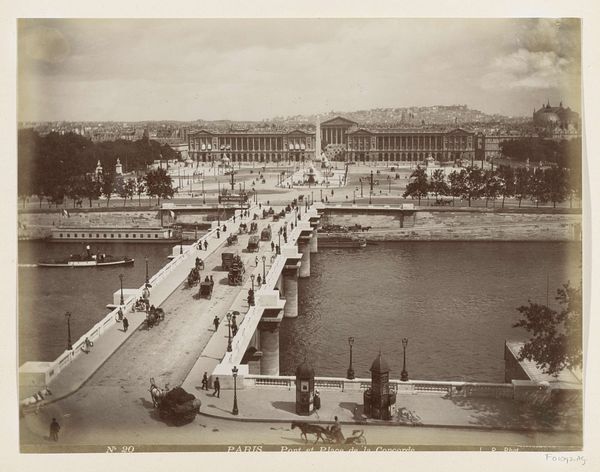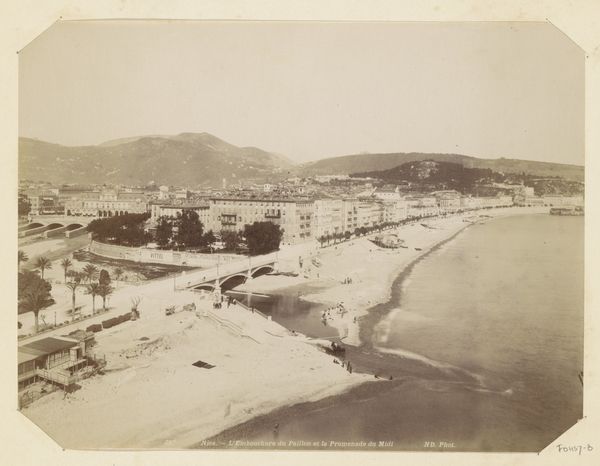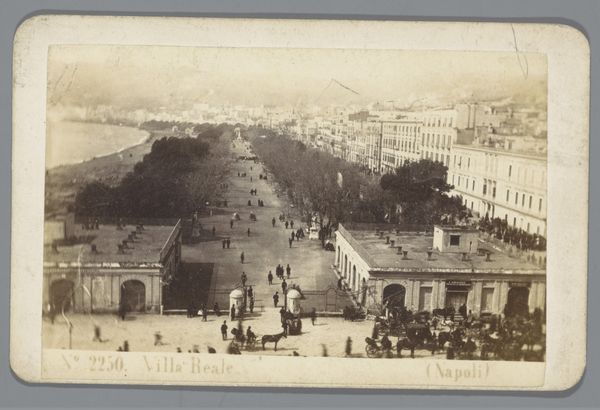
Dimensions: height 65 mm, width 103 mm
Copyright: Rijks Museum: Open Domain
Editor: This is Giorgio Sommer’s "View of Naples and the Castel Sant'Elmo," created sometime between 1865 and 1888. It's an albumen print, giving it a somewhat faded, dreamy quality. The composition is really striking with that huge castle looming over the cityscape. What grabs your attention most about this piece? Curator: The albumen print process is key here. Notice how it allows for a mass production of images, turning city views like this into commodities for tourists. These photographs fed a growing desire to consume experiences, even secondhand. Consider the labor involved: from preparing the paper with egg whites and silver nitrate, to the lengthy exposure times, and then the printing process itself. This image is less about artistic expression and more about industry, labor, and tourism. Editor: So you're saying the value isn’t in Sommer's artistic vision, but in its function as a product of its time? Curator: Precisely. How does its reproduction speak to a rising middle class, and to the marketing of picturesque locales? Think about the chemical processes central to its creation—each one is labor and part of the economics behind such art. What kind of statement might be produced if someone attempted to recreate this view in a more 'handmade' aesthetic or with locally sourced natural materials? Editor: It changes the entire context. A contemporary 'natural' or hand-made version would be a statement against mass production. I see what you mean about questioning traditional art boundaries, because with photography, so much value and 'statement' lies within the process and modes of production that the materials inherently create. Curator: Precisely, considering modes of production offers a radically different way to frame photography. Thanks! Editor: Thank you, I will definitely look at things differently.
Comments
No comments
Be the first to comment and join the conversation on the ultimate creative platform.
